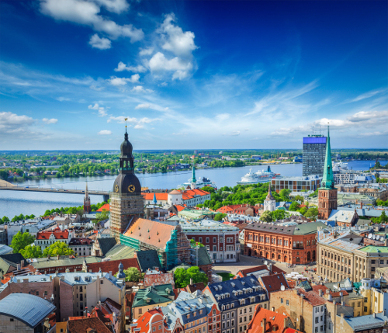Destination Search
Filter Results
-
Accessibility
-
Board Basis
-
Accommodation Type
-
Star Rating
-
The UK's largest accessible holiday specialist
-
Guaranteed accessible accommodation
-
Many properties personally audited
-
Flights, adapted transfers & equipment hire
Disabled Holidays in Latvia
-

Accessible Hotel
Jurmala- Room only
- Hotels
General Description 3 star accommodations Accessible to many local attractions Close proximity to historic district Close proximity to major attractions Ideal accommodations for a vacation getaway Location Perfectly located in beautiful

-

Accessible Hotel
Riga- Room only
- Hotels
- 4 Stars
Overview: Radisson Blu Elizabete is a modern 4-star hotel offering stylish accommodation in the heart of Riga. Highlights include a glass-enclosed courtyard restaurant, onsite fitness centre and free Wi-Fi.

-

Accessible Hotel
Riga- Room only
- Hotels
- 4 Stars
Location. Tallink Hotel Riga is a business friendly hotel located in central Riga, close to Riga Opera House, Town Hall, and Riga Castle. Additional points of interest include Freedom Monument and St John's Church. Hotel Features.

-

Accessible Hotel
Riga- Room only
- Hotels
- 5 Stars
Location. Located in central Riga, Gallery Park Hotel is within walking distance of Latvian Art Museum, Powder Tower, and Freedom Monument. Nearby points of interest also include St. Jacob's Cathedral and Three Brothers. Hotel Features.

-

Accessible Hotel
Sigulda- Room only
- Hotels
- 4 Stars
Property Location Located in Sigulda, Hotel Segevold is close to Sigulda Castle and Gauja National Park.Rooms Make yourself at home in one of the 43 air-conditioned rooms featuring minibars. Satellite television is provided for your entertainment.

-

Accessible Hotel
Riga- Room only
- Hotels
- 5 Stars
Royal Square Hotel & Suites is a business-friendly hotel located in Riga's Old Town neighborhood, close to Town Hall, Parliament, and Riga Castle. Additional points of interest include Cathedral Square and St. Peter's Church.

-

Accessible Hotel
Riga- Room only
- Hotels
- 4 Stars
Wellton Gertrude Hotel is an elegant 4-star property offering classic accommodation near the heart of Riga. Highlights include air-conditioning, free Wi-Fi and good public transport links.

-

Accessible Hotel
Riga- Room only
- Hotels
- 5 Stars
Offering modern luxury with respect for privacy and attention to detail, the hotel attracts international and local business people as well as discerning travellers who appreciate the quiet lobby bar and fine-dining restaurant.

-

Accessible 4 star hotel
Latvia- Bed and Breakfast
- Hotels
- 4 Stars
PK Riga Hotel presents historical beauty through contemporary elegance. Conveniently located in the quiet centre of Riga in Art Nouveau neighborhood, within a walking distance to the Old Town.
 Please call 0161 260 2218 - Please note we are awaiting access confirmation.
Please call 0161 260 2218 - Please note we are awaiting access confirmation.
-

Luxury 5 star hotel
Latvia- Hotels
- 5 Stars
5 star accommodations Prime location Close proximity to historic district Close proximity to business district ...
 Please call 0161 260 2218 - Please note we are awaiting access confirmation.
Please call 0161 260 2218 - Please note we are awaiting access confirmation.
-

Accessible 4 star hotel
Latvia- Hotels
- 4 Stars
Opened in 2005, this fully air-conditioned hotel combines contemporary elegance with ...
 Please call 0161 260 2218 - Please note we are awaiting access confirmation.
Please call 0161 260 2218 - Please note we are awaiting access confirmation.
-

Accessible 4 star hotel
Latvia- Hotels
- 4 Stars
The air-conditioned hotel welcomes guests into a reception hall with 24-hour check-in ...
 Please call 0161 260 2218 - Please note we are awaiting access confirmation.
Please call 0161 260 2218 - Please note we are awaiting access confirmation.
-

Accessible three star hotel
Latvia- Full board
- Hotels
- 3 Stars
Renovated in 2005, the 11-storey hotel comprises a total of 246 rooms, which includes 9 junior suites. The hotel offers ...
 Please call 0161 260 2218 - Please note we are awaiting access confirmation.
Please call 0161 260 2218 - Please note we are awaiting access confirmation.





